Despite meticulous care, weeds that look like grass can infiltrate even the best-kept lawns, and go unnoticed. By the time you spot them, they are already competing with your existing turf.
Weed identification and elimination are vital to prevent these intruders from stifling your carefully nurtured grass. This guide will help you recognize common grass-like weeds and provide solutions for proper weed elimination.
Quick Answer
Below is a list of common weeds that look like grass:
Identifying Weeds That Look Like Grass
1. Annual Bluegrass
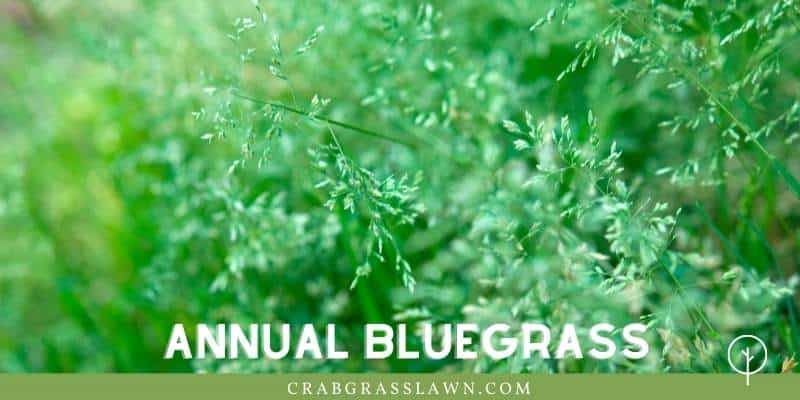
Annual Bluegrass is one of the most common weeds that mimics the appearance of grass. Known simply as Poa due to its genus name Poa annua, it’s related to other Poa grasses such as Kentucky Bluegrass.
Annual Bluegrass can be distinguished by its brighter and more vivid coloring. Like all Poa grasses, this weed grass has boat-shaped leaf tips.
Also known as annual meadow grass, poa annua is a cool-season weed that prefers moist environments and will brown as the temperature rises throughout the summer months.
In residential lawns, this weed tends to grow in wet and shady areas. Dry and hot weather causes this weed to die off leaving bare patches behind.
2. Crabgrass
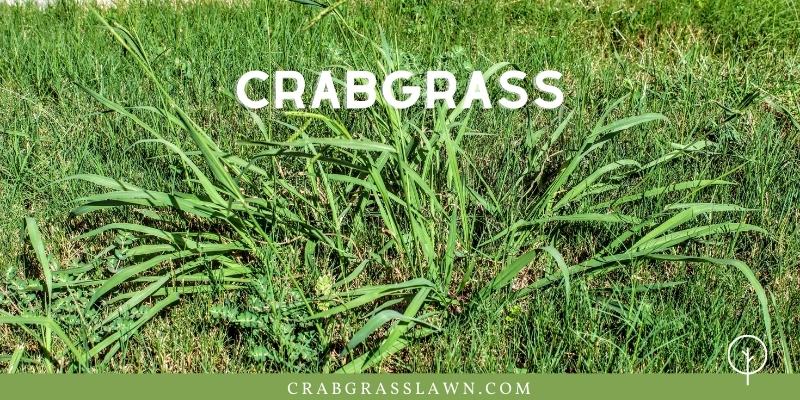
Many people are familiar with crabgrass, a weed that can quickly overtake a lawn. Two of the common varieties of this grass are smooth crabgrass and large crabgrass.
Other names for crabgrass include crowfoot grass, finger grass, and summer grass. These annual weeds grow throughout the summer months and like to grow in patches.
They are prolific growers and are tolerant of heat and drought. This makes the control of this weed difficult and usually ongoing.
Smooth crabgrass is more commonly found in lawns as large crabgrass doesn’t tolerate low mowing but smooth crabgrass will.
Smooth crabgrass is a low-growing plant with smooth, dark green leaves that are approximately 5 inches in length.
If left unmowed, it can grow up to 6 inches in height. The first frost of the winter or fall season will usually kill this weed. Large Crabgrass is billed as one of the most troublesome weeds in lawns and germinates throughout the summer.
But just like small crabgrass, large crabgrass has fuzzy leaves but both species lack auricles in the collar region.
3. Nutsedge
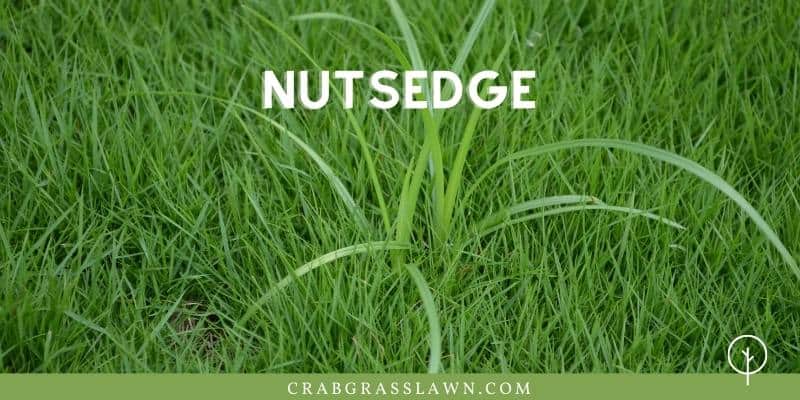
Nutsedge typically will sprout up in the summertime. Also known as Nutgrass, the shoots are generally 1-4 times the height of fescue or Bermuda lawns. This is easy to see in well-cut yards and will typically grow tall in between cuts.
Nutsedge is also easy to pull out of the ground but you need to be careful that you pull it out near the base of the soil and to make sure that you pull out the entire root.
If you don’t, you will end up splitting the root which will lead to more offshoots of the weed. Nutsedge is a perennial sedge and can grow each season unless you have it under control. Using a product like SedgeHammer will keep it at bay.
4. Common Couch
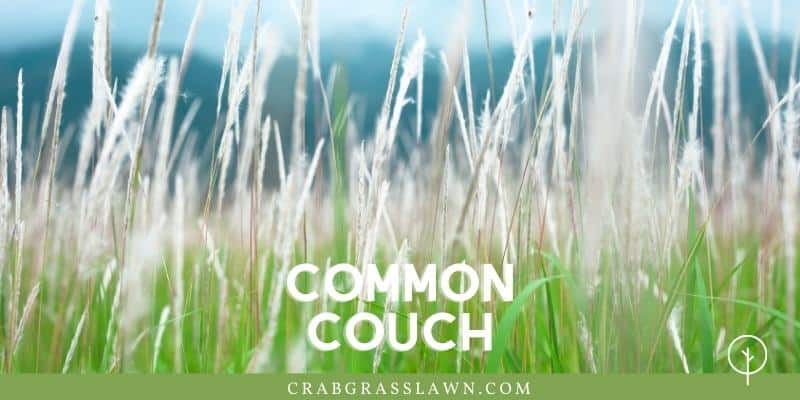
Common Couch is a weedy grass that forms a dense mat-like layer over lawn turf. This weed is prolific as stems grow underground and can sprout up throughout the lawn.
Hardy rhizomes allow this plant to spread at a rapid pace. It has flat hairless leaves and flower stems that may resemble a windmill or umbrella. It has a dark green color and thrives in full sun. It grows poorly in shaded areas.
While this is sometimes described as a turfgrass, many people see this as an invasive and pesky weed.
It is possible to remove Common Couch by hand pulling, but through this method, it is important to remove all of the roots, and unfortunately, it’s easy to miss rhizomes. Rhizomes brought to the surface will dry out and die within a few days. A heavy infestation of this grass will require herbicide treatment.
5. Tropical Carpet Grass (Axonopus sp.)
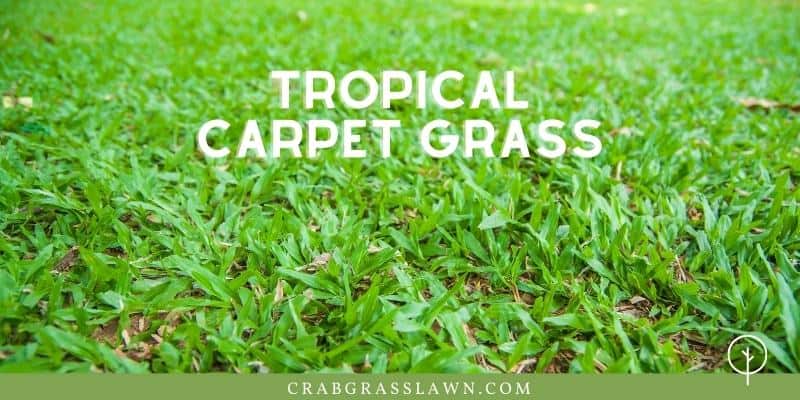
This grass, also known as Axonopus Compressus, is a hardy and dense grass that has blunt round leaves and grows best in subtropical and tropical climates. This a creeping grass and is frequently grown from its runners.
It forms a low-growing mat and the leaves are shiny and waxy in appearance. It can be distinguished by its crinkly leaves and has a vivid green coloring, with some purple and red coloring at its base. While it can be used as grass for yards, parks, and other areas, it also is frequently identified as a weed when a dense cover takes over your lawn.
This grass is not drought tolerant and could die due to lack of moisture. It is also sensitive to broadleaf herbicides and, hence can be easy to eliminate with herbicide treatments.
6. Blue Fescue

This ornamental plant has striking blue-green foliage and is often grown as a ground covering or as an accent plant.
It grows in mounds up to 12 inches in height. Blue fescue is also an evergreen and a cool-season plant. The foliage grows in needle-like spikes and has bright green flowers.
While it shares a name with other fescues, such as tall fescue, this weed plant is different from the fescue grasses that are typically found in turf lawns.
If this grass has taken over a portion of your yard, management options include hand pulling or the application of a glyphosate herbicide.
7. Goosegrass (Eleusine indica)
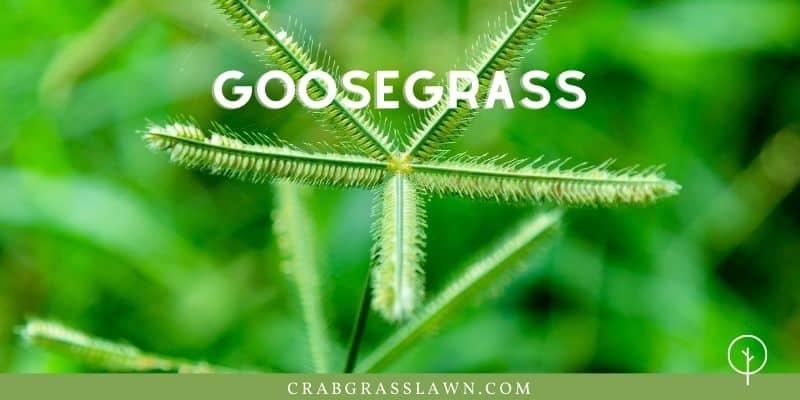
Goosegrass, which is also known as Wiregrass or Silver Crabgrass, is very tolerant of multiple harsh conditions. It can sometimes be confused with crabgrass, though it is not related to this weed.
It has a light green appearance and grows in clumps with low stems that appear to be flattened. Adding to this, it can grow as wide as 2 ½ feet.
You may be able to identify this weed by its white center and wagon wheel-like growth pattern. It is an annual summer weed that will germinate after the soil reaches temperatures above 60 degrees Fahrenheit.
Control of this weed can start with the use of pre-emergents in late winter/early spring, however, as this a summer weed it can pop up long after pre-emergents have broken down in soils.
If there are only a few weeds sprouting in the yard, the best course of action is to just hand-pull this weed instead of resorting to chemical control. Effective chemicals for this weed include oxadiazon and dimethenamid.
8. Creeping Bentgrass
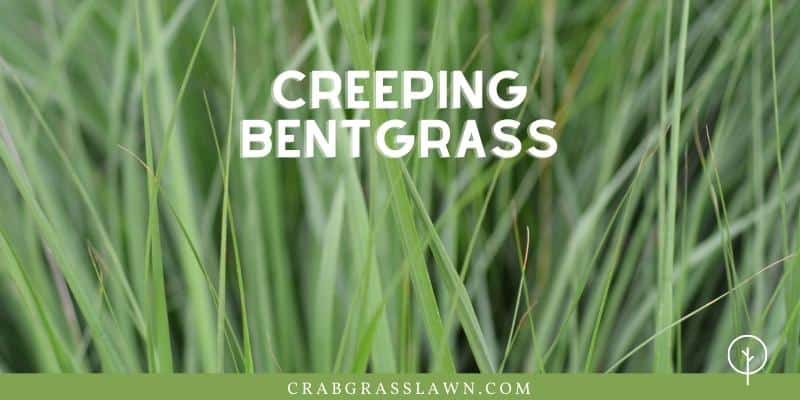
Creeping Bentgrass is an aggressive plant that can quickly overtake a lawn. It grows quickly and densely, and can easily become a troublesome yard nuisance.
As a cool-season plant, this grass will grow the quickest in the spring. Creeping Bentgrass is a lighter and brighter shade of green than darker grasses, such as Kentucky Bluegrass.
It has long and thin leaves that are easy to identify once you know what to look for. This grass is sometimes used as a specialty grass for putting greens, lawn tennis courts, etc.
Herbicides with glyphosate will kill creeping bentgrass, but it is important to remember that this product is likely going to kill the grass that you want to keep as well.
It is important to check the grass you currently use for your lawn for herbicide tolerance. If you choose to pull this weed by hand be sure to get the entire root so it will not continue to spread.
If you have a heavy infestation, you may need to consider your options for tilling and re-sodding.
Use our guide below to find the products you will need to kill weeds along with step-by-step directions on how to best use them.
How to Get Rid of Weeds That Look like Grass?
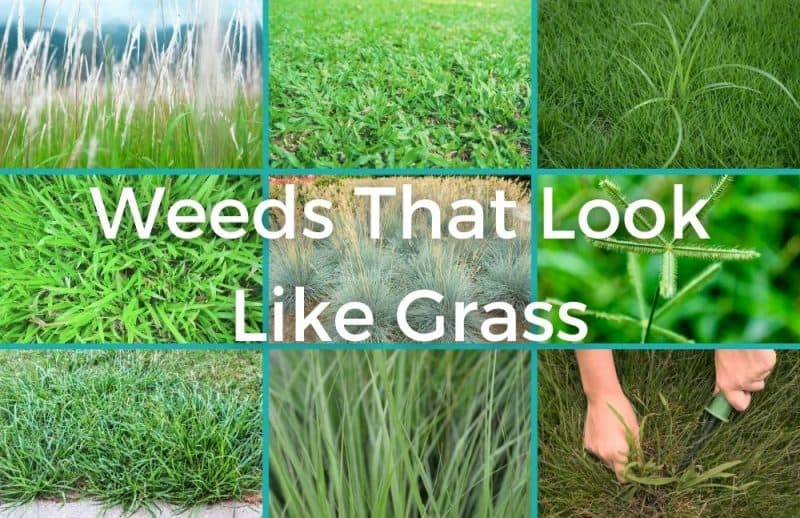
15 min
Prepare Your Sprayer or Spreader
Regardless if you are using a liquid or granule product, you need to have the right setting on your sprayer or spreader for the product you are using. The bag or bottle of the killer will have the recommended settings for what you are using. Read the instructions.
Add The Weed Killer
Add the recommended amount of granule or spray to your applicator of choice. Again, the right amount will be listed in the instructions.
Spray or Spread On the Weeds
Since you followed the recommended instructions above you should be good to go with applying the product. For either spray or spread, gently walking over the area should give good coverage. If you spray make sure the weed gets good coverage. Don’t water in for a good 1-2 hours. For granules, you can water the product in right away.
Estimated Cost: 69 USD
Supply:
- Goggles
- Gloves
- Hand spreader or sprayer
Tools:
- Weedkiller liquid or granules
What Kills Weeds That Look Like Grass?
You can use a pre-emergent herbicide to kill grassy weeds such as crabgrass and foxtail if they haven’t emerged yet. Nitrophos Barricade is my go-to pre-emergent that blocks over 3 grass and broadleaf weeds.
- Prodiamine .58%
- Barricade Herbicide is for use in established turfgrass, lawns, sod nurseries, container ornamentals, feild grown ornamentals, landscape ornamentals, conifer nurseries, seedling nurseries, rights of way, roadways, roadsides, railways, equipment yards, tank farms, pumping stations, parking areas, storage areas, ungrazed fence rows, and christmas tree farms.
- Barricade is applied with a broadcast spreader at a rate of 10 pounds per 5000 square feet.
Affiliate links and images pulled from the Amazon Product Advertising API on: 2025-07-02
However, if the grassy weeds have already cropped up on your lawn, applying a post-emergent herbicide will kill them quickly. Quinclorac is an excellent post-emergent grassy weed killer and offers superior results.
- Quinclorac 18.92%
- Residential and Non-Residential Turfgrass, Golf Course, Sod Farms
- Vector Blue is Non toxic to people, animals and the local environment
Affiliate links and images pulled from the Amazon Product Advertising API on: 2025-07-02
The Importance of Prevention for Grass Weeds Control
Preventative weed control can prevent the onset of weeds. Regular weed control also helps maintain a healthy lawn and helps ensure that your grass and other desired plants are able to access the resources they need to thrive.
For example, when you apply fertilizer, weeds are the quickest to soak up the nutrients that were otherwise meant to fuel your lawn’s growth. But that’s not all, preventing weeds prevents pests and diseases as they weaken grass plants.
FAQs
What Are the Tall Weeds That Look Like Grass?
There are several tall weeds that look like grass like crabgrass, quackgrass, and nutsedge. These sly impostors can usually be distinguished by their ability to grow quickly and spread aggressively, smothering your grass and other plant species in the area.
Final Thoughts
There are several pesky weeds that can disguise themselves as grass on your lawn. But before applying any treatment, it’s important to determine the type of weed and the extent of the damage to choose the right herbicide.
References
- University of California – Creeping Bentgrass
- Purdue University – Goosegrass
- CABI Axonopus Compressus
- Clemson Bluegrass Control
Related Articles
Best Weed Killers for Bermuda Grass (Safest Post-emergent Herbicides)
Hi, Alex Kuritz here. Growing up I remember that my family had one of the best lawns in the neighborhood. Richly green and lush. I did a lot as I grew up in terms of caring and tending for not only my family’s lawn but also my neighbors. I can say I have years of experience, and I am here to share it with you.




